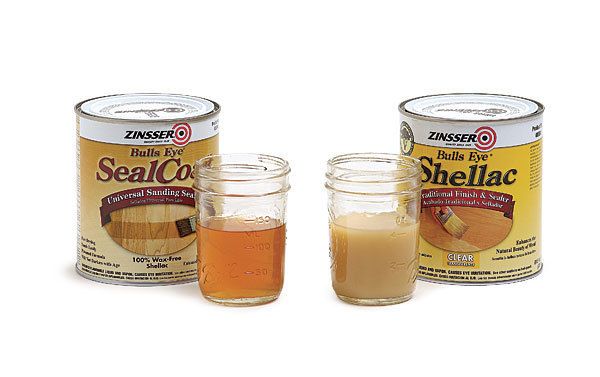Seal Your Project with Dewaxed Shellac
Finishing pro Jeff Jewitt explains which shellac sealer to use.

Q:
Is there any difference in the sealing properties of Zinsser’s SealCoat (dewaxed shellac) and regular Bulls Eye shellac? I have had trouble finding SealCoat. Can I use regular shellac as a sealer instead?
Mike Smith, Seneca, SC
A:
Both of these products seal the wood equally well, but some finishes won’t stick to regular shellac. Both amber and clear Bulls Eye shellac have a natural waxy substance that interferes with the adhesion of oil-based polyurethane and water-based finishes. To address that problem, Zinsser created SealCoat, a dewaxed shellac, meaning it has the wax removed. That’s why you see SealCoat advertised as a “Universal Sanding Sealer” on the can.
A representative at Zinsser told me that although they are still producing SealCoat, a poor shellac crop has driven the prices up, and many customers have turned to cheaper alternatives. As a result, some stores have stopped stocking it. But SealCoat is still available at specialty woodworking stores and through online retailers.
If you are using nitrocellulose lacquer or oil-based varnishes other than polyurethane, such as Waterlox or any alkyd varnish, you can safely use the waxy amber or clear 3-lb. cut. If you’re using oil-based poly or any water-based finish, stick with SealCoat. If you’re up for it, you can also mix your own shellac using dewaxed shellac flakes. Just make sure to use blond or super-blond to avoid darkening the color of the wood.
Photos: Staff
More from FineWoodworking.com:
Fine Woodworking Recommended Products

Odie's Oil

Diablo ‘SandNet’ Sanding Discs









Comments
I've never had any trouble with using Zinsser's regular shellac under oil-based poly. I've done it quite a few times with no ill effects. Granted, it is usually glazed when I do this, and I would bet that the solvents in the oil-based glaze remove waxiness from the surface of the shellac.
Another option is to just use whatever finish you're going to end with as the sealer -- the only reason to use shellac is its rapid drying time. Nothing about shellac "seals" the wood any better than polyurethane -- but if you want to seal, glaze, then finish, shellac makes the process faster. If you are just wanting to seal, sand the nibs and raised grain, then finish, you might as well just use whatever you are going to top coat it with, especially if you seal it as the last stage of the day's work.
Log in or create an account to post a comment.
Sign up Log in